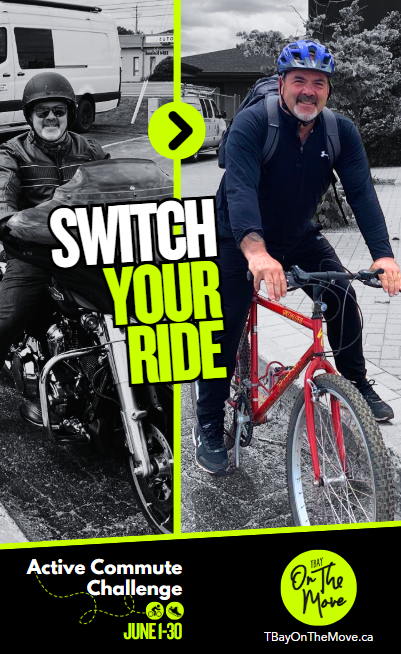
Active CommuteChallenge
Start by signing up!
First, create an account! Once you create an account, start recording your active commutes this June!
What is the Active Commute Challenge?

Frequently Asked Questions
ACC Participation Requirements
Sustainable modes of transportation include walking, cycling, carpooling, and taking public transit. These options are significantly better for both the environment and personal health compared to driving alone. Any non-motorized form of transportation, such as rollerblading, skateboarding, unicycling, or canoeing, is also considered a healthy and sustainable commute.
Congrats on choosing an active and eco-friendly way to commute! You don’t have to participate every day of the Active Commute Challenge. To take part, simply complete one trip without your car. You could carpool with a coworker, ride your bike, or take the bus. See how it feels and decide if you want to continue. The more trips you make without using your car, the greater the impact you’ll have and the greater your chance to win prizes.
The goals of the Active Commute Challenge are to increase physical activity, reduce emissions, and mitigate traffic congestion. Driving an electric vehicle alone does not count toward this challenge.
The Active Commute Challenge is open to all residents of driving age in Thunder Bay and District. While it’s primarily designed for workplaces, individuals without a workplace affiliation are also welcome to take part by signing up on their own.
Yes, everyone needs to register again each year. It only takes a minute to set up your account.
You can register and log your commutes up until and including Monday, June 30, 2025. We recommend logging each commute individually—every time you choose a sustainable mode of transportation, you’ll earn a ballot for prize draws.
Individual Prizes
Every time you choose a sustainable commute, you receive a ballot to be entered into prize draws. The more times you replace a trip in your car, the greater chance of winning! Remember to log each trip separately.
Prizes will also be awarded to the commuter with the most kilometres travelled in each mode.
Only commutes logged between June 1-30, 2025 will be eligible for prizes.
In line with our commitment to sustainability and encouraging active transportation, this year we are excited to offer local electronic gift cards as prizes that promote both physical activity, environmental responsibility, and support for our local community.
Prize draw winners can choose a $50 gift card from the following local businesses:
- 3Ride
- Fresh Air Experience
- Play It Again Sports
- Rollin Thunder
- Sport Chek
- Waterfront District
Winners with the most kilometres travelled will receive a $100 gift card.
There will be 5 weekly prize draws and 10 draws at end of challenge. That’s 30 draw prizes up for grabs!
5 prizes will also be awarded at the end of the challenge for the commuter with the most km travelled in each mode (walking, biking, other, transit, or carpool).
Winners will be contacted via email to choose a gift card of their choice.
Anyone who registers prior to June 1st and logs an active commute during the first week of the challenge will be entered into a draw to win 1 of 5 early bird prizes including a bike tune-up or a $100 gift card from local bike shop.
Workplace Prizes
Prizes will be awarded to the workplace with the most km travelled in each size category. Workplace size categories are as follows:
- Extra small <20 employees
- Small 21-99 employees
- Medium 100-249 employees
- Large 250-999 employees
- Extra Large >1000 employees
Prizes will also be awarded to the commuter with the most kilometres travelled in each mode.
Winning workplaces can choose 1 of the following workplace prizes
- City of Thunder Bay Bike rack (valued at approx. $250)
- 5 U-locks for their workplace (valued at approx. $200)
Any workplace that registers prior to June 1st will be entered into a draw to win
Eco Superiors Guided Forest Therapy Walk with $100 in Waterfront District BIA bucks
To recognize their contributions to the challenge’s success, workplace champions will be entered into a draw at the end of the challenge for a chance to win one of six 10-pass booklets to the Canada Games Complex with $25 Waterfront District Gift Certificate.

